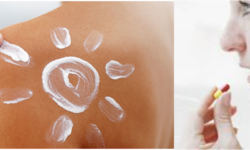
To get the most out of the different skincare products, it’s important to follow a proper skincare regime in order to address your skin concerns. For flawless and glowing skin, the layering of skincare products in proper order is important.
Which skincare product should we apply first: eye cream, moisturizer, sunscreen, or serum?
The answer lies in the pH level, consistency and absorption level of skincare products that are the key factors that influence layering order. While sequencing your skincare product, start with liquid-based skin products followed by cream-based to ensure proper absorption
In this article, we will provide the step-by-step procedure of applying skincare products in right layering order to ensure luscious skin.
Step 1: Clean your Face
Always start your skincare routine with washing your face. Use a mild face wash as the first step in your skincare routine. Cleaning removes any debris, oil, and grime that may have built up in and around your pores and leaves your skin clear for products to absorb.
Though the cleanser won’t eliminate the natural oil of your skin but one should select a cleanser that is mild, devoid of alcohol, and non-abrasive. Choose water- or oil-based cleansers based on the type of skin you have.
Step 2: Tone up your skin
After cleansing, toners can help remove extra oil and debris, better preparing your skin for subsequent treatments. Toners may help ward off acne by promoting a healthy pH balance and also hydrate your dry skin. Your skin can be refresh with toner without losing its natural moisture content. They can add up to your skin health by giving some extra nourishment.
Step 3: Spot Acne and Pimples
Immediately after cleansing or toning, apply spot treatment cream on your face for any specific marks, pimples or dark patches. Depending on what you’re treating, these products contain different active ingredients and target small areas of skin. Maximize the amount of active ingredients that penetrate your skin by directly applying spot treatments to your freshly toned skin.
Step 4: Put Serum on your face
You can apply Serums directly to the skin surface immediately after cleansing or toning. Serums are lightweight with active ingredients like vitamin C, niacinamide that penetrate the skin and enhance hydration, give brightness and target specific skin issues. It helps in plump, tone and lighten skin.
Step 5: Treat your Eyes with Eye Cream
To take care of under eye area, apply an eye cream in the morning and at the night. Because eye creams are thick, you should apply them after any treatments to aid in better absorption. Although an eye cream is not necessary, it can help hydrate and moisturize the delicate skin under your eyes, which is prone to wrinkles and sun damage. To minimize your skincare regime, you can also move this step before bedtime only.
Step 6: Moisturize your Skin
Moisturizers replenish moisture in your skin and restore your skin’s natural oil. It also shields skin from friction, soothes minor skin fissures, and forms a protective film. If you don’t wear eye cream for under eye area during the day, you can still seal moisture in your skin by applying day cream or moisturizer after serum.
Step 7: Screen your skin from the sun
The last step in your daytime skincare routine should always be sunscreen. If the sun protection in your day cream is lacking, you can rely on a sunscreen creams. Regular use aids in shielding your skin from UV radiation, which can lead to skin cancer and wrinkles and sunspots.
Skincare at Night
In order to give complete care to your skin, you can also follow the proper sequence for your skincare routine when it is night. Your skin can absorb nutrients and repair damage more effectively at night.
- Apply Makeup remover followed by face wash
- Use Toner
- Apply Eye cream for dark circles and wrinkles
- Apply Night Cream at the end – In addition to softening and smoothing your skin, night cream helps lessen the visibility of dark circles beneath your eyes and help in skin repair.
If you need assistance determining which active ingredients and products are best for your skin type, speak with your dermatologist.









